Why aren’t more families in need getting food aid from WIC nutrition program?
The story was originally published by the Chicago Sun-Times with support from our 2023 Data Fellowship.
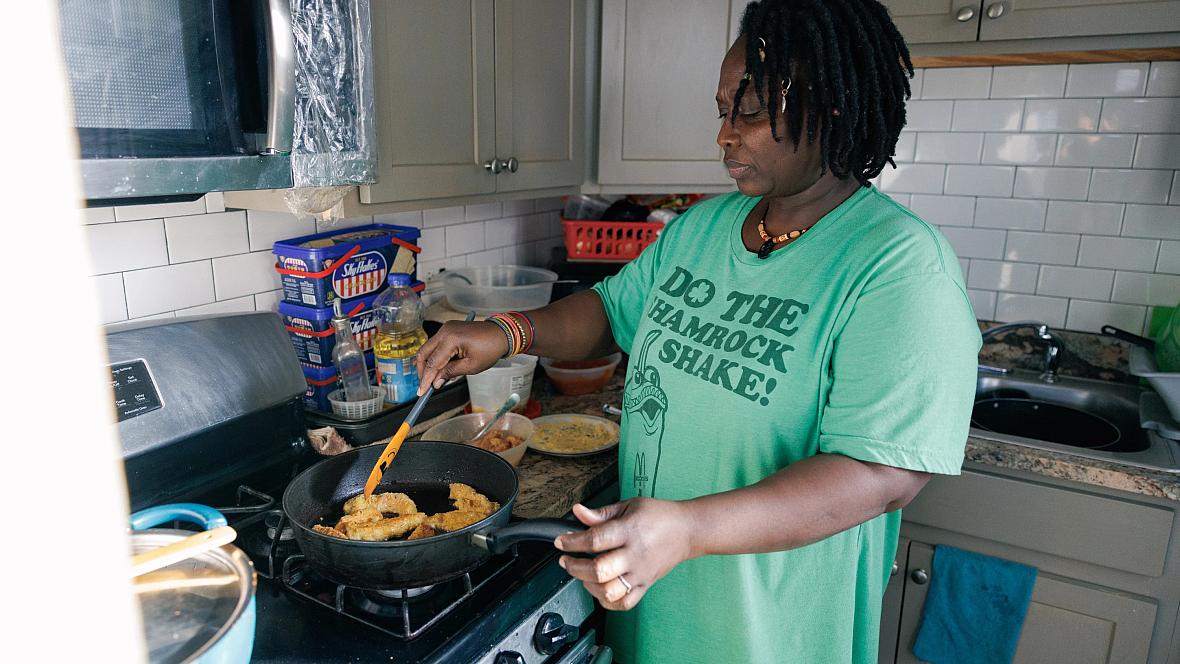
Adwoa Sarkodie goes to Nourishing Hope’s food pantry in Lake View once a month. She participated in the WIC program between 2013 and 2018, from the time her children were born until they aged out of the program at 5 years old. Since 2018, the federal nutrition assistance program for moms and young kids has seen an overall decline in participation.
Anthony Vazquez/Sun-Times
Adwoa Sarkodie has not been able to work since 2020 when she tested positive for COVID-19 while working full time as a certified nursing assistant at a nursing home. Now suffering from long COVID, she has been unable to work and has — like thousands of others in Illinois — relied on food pantries to feed her boys, ages 9 and 10.
“If the kids are hungry, they can’t do their homework. If a kid is hungry, they can’t function,” Sarkodie said as she waited in line for four hours in December at Nourishing Hope’s food pantry in Lake View.
Kellie O’Connell, CEO of Nourishing Hope, said the past four years have “felt like one crisis after another.”
"We're providing more services to more people than we did at the height of the pandemic. And now we're really responding to a major influx of migrants and asylum-seekers who have arrived in Chicago in the past two years, while continuing to serve Chicagoans who have turned to us for years,” O’Connell said.
Yet while local food pantries report an increase in demand for help, a federal nutrition assistance program serving women and young children has seen a big drop in the number of families taking part. The Special Supplemental Nutrition Program for Women, Infants and Children — commonly called WIC — has seen an overall 17% decline in participation in Illinois despite the eligibility rate being the highest since 2018, according to an analysis of enrollment data from the U.S. Department of Agriculture.
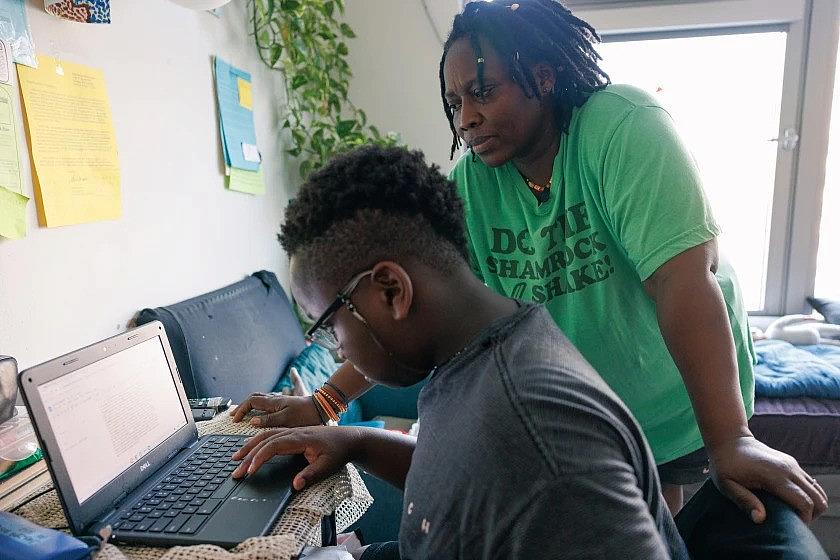
Adwoa Sarkodie watches over her son Joel Atiemo as he does homework Monday at her home in Lake View. “If the kids are hungry, they can’t do their homework. If a kid is hungry, they can’t function,” Sarkodie said.
Anthony Vazquez/Sun-Times
WIC offers food packages and other support programs to pregnant women and their children up to age 5, as long as their income doesn't exceed the maximum level based on their household size.
Advocates pushed for a funding increase as the program faced a $1 billion shortfall this year. Congressional leaders on Sunday released a package of bills setting full-year spending levels for some federal agencies, including $7 billion for WIC, covering the projected shortfall that would've cut off access to nearly 50,000 eligible families in Illinois. The House passed the spending bills Wednesday, and the Senate is expected to take up the legislation before a midnight Friday government shutdown deadline.
“Funding for WIC remains a priority for me, and I am encouraged that we have released Fiscal Year 2024 legislation that will include a $1.03 billion increase in WIC funding, while also protecting ... other nutrition programs,” Sen. Dick Durbin, D-Ill., said in a statement.
While WIC appears to be getting full funding for the current fiscal year, the program is still underused. The paradox of increased need and low participation is due to several factors, advocates of the program say, including barriers to applying for and maintaining benefits, lack of awareness, and for some, fear stirred by misinformation.
Food pantries see record numbers
The number of U.S. households lacking access to adequate, healthy food increased to 44 million, including 13 million children, in 2022 according to the U.S. Agriculture Department. This represents the highest number since 2014 and the largest one-year increase since 2008.
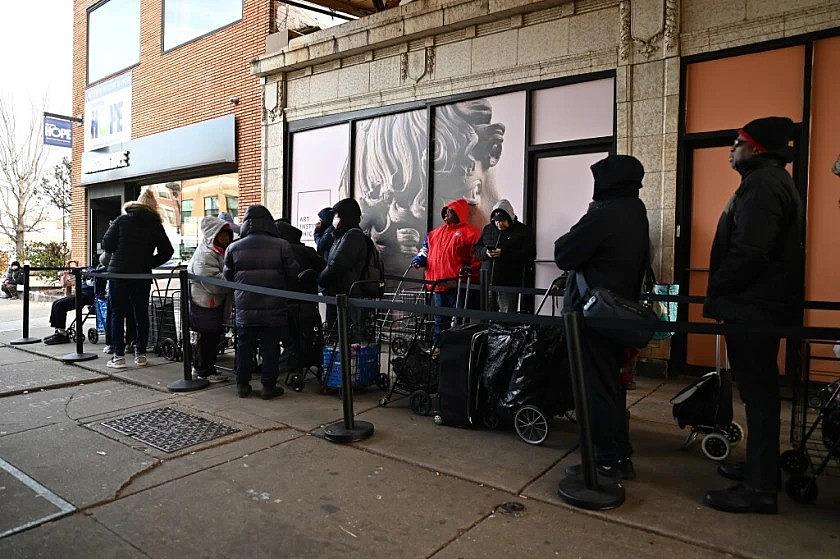
People line up outside of Nourishing Hope in Lake View before it opens for a holiday food distribution in December.
Victor Hilitski/For the Sun-Times
And the issue doesn’t seem to be improving for struggling families. The Greater Chicago Food Depository, which provides food to a network of 800 partner sites across Chicago and Cook County, has experienced a year-over-year increase in household visits during the last few years since the pandemic, said Man-Yee Lee, spokesperson for the depository.
The depository served 186,000 households in December, a 29% increase from the previous month, she said.
The increase can be traced to a combination of reasons, experts say. Families are still struggling from the lingering effects of the pandemic, including job loss, medical debt, high inflation, high food prices, rent increases and the elimination of a temporary boost in benefits for WIC and the Supplemental Nutrition Assistance Program, commonly called SNAP, during the pandemic. SNAP also provides food aid to low-income families.
Lee said the organization has been able to keep up with the increase in demand thanks to donations from supporters, but that’s not enough.
“Relying on philanthropy alone to solve hunger is not sustainable," said Lee. “Public benefit programs like SNAP and WIC are essential to alleviating hunger, and we need to strengthen the safety net, not weaken it.”
Staff at Nourishing Hope say they are operating at numbers higher than at the height of the pandemic. In fiscal year 2021, the pantry provided help for about 174,000 individuals who received food and social services, which includes connecting people to jobs, housing and utilities support and mental health counseling. In the current fiscal year, the food pantry expects to surpass 197,000 clients.
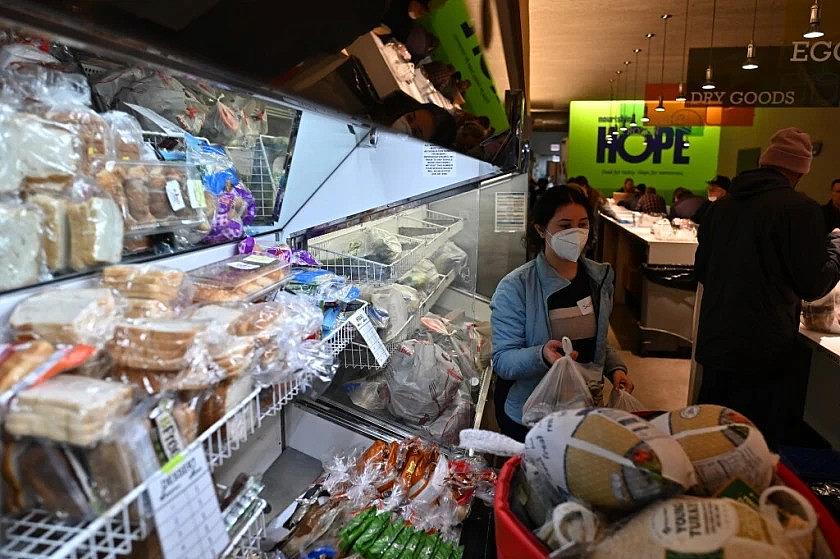
Staff at Nourishing Hope say they are operating at numbers higher than at the height of the pandemic.
Victor Hilitski/For the Sun-Times
At the Friendship Center in Lincoln Square, the pantry has seen the number of clients seeking food assistance skyrocket in recent years, from 5,502 clients in 2018 to 20,469 clients, representing almost 50,000 household members, in 2023 — a staggering 272% increase.
The number of eligible families is growing. In 2021, 44.2% of Illinois families who qualified for WIC were not enrolled, the highest such figure since 2018, according to the latest estimates.
In Illinois there are more than 419,000 eligible women, infants and children, but only slightly more than a third of eligible participants are signed up, according to the USDA. There has been a slight uptick in participation in the last two years due to increased outreach, but overall participation in Illinois has dropped in recent years; nearly 165,000 participate in WIC, down from 199,000 in 2018.
“It looks like we’re capturing quite a good share of eligible families right after the baby is born,” said USDA Deputy Undersecretary Stacy Dean in an interview. “And we might be losing them by their second or third birthday.”
Some families drop out after a child is no longer on formula, which is expensive, parents and advocates of WIC said.
Eligible families face barriers
There are several reasons why WIC is underused. Lack of awareness is a major one cited by advocates.
One such parents is Amanda, who was unaware of WIC until she confided in someone at her Arlington Heights church that she had lost her job recently after her second child was born.
“I’ve always been someone that has had several sources of income,” said Amanda, who asked that her last name not be used. She added that she quit her side job because she felt secure financially, but then she was shocked when she got laid off from another one.
She used all her savings and was struggling to pay her mortgage and property taxes and to feed her two children, ages 1 and 3.
“Going from making $100,000 a year to needing public assistance is very nerve-wracking and humbling and like, how did this happen?” Amanda said.
While talking to other moms at the WIC office, she’s realized her situation is not unique and wishes more people would talk about the benefits of the program.
“I just found it astonishing that nobody teaches you this. This isn’t something that any of us are learning at school, right?” Amanda said.
Low-wage earners may not realize they qualify for programs like WIC, said Margaret Saunders, director of the Community and Economic Development Association of Cook County, which runs the WIC program serving about 43,000 women and children.
For young families, there can be changes in income, and sometimes those families aren’t aware that they can apply before their financial struggles become too severe. Programs like WIC are especially meant to help these families.
“For the parent through pregnancy, delivery, their breastfeeding choices, we are just a safety net,” Saunders said. “A growing brain needs that help and support, even if the parent is going to have a job change and income flux.”

Adwoa Sarkodie stands in her kitchen in her Lake View home.
Anthony Vazquez/Sun-Times
Sarkodie now relies on the food pantry, but she participated in WIC between 2013 and 2018, from the time her children were born until they aged out of the program at 5 years old. Because she was a single mom with limited resources, receiving milk, cheese and cereal regularly was a huge help. While it provided a safety net for her family, Sarkodie said fear and misinformation in immigrant communities is deterring some families from signing up.
“People will tell you, don't go [apply] because it will mess up your immigration status. ...They tell you if you do this, you will get in trouble with the law. And that's not true,” Sarkodie said.
Nathalie Querales, director of food services at Casa Central in Humboldt Park, has also heard those fears, especially from the migrants her group serves, since more than 36,000 have arrived since 2022. The nonprofit predominantly serves the Hispanic community with child care, food assistance and adult wellness services.
“That's the biggest [concern] I hear from our participants, is that they just don't know. And they're kind of scared,” Querales said.

Nathalie Querales, director of food services at Casa Central in Humboldt Park, says some potential WIC clients are concerned about applying for the program over fears it might affect their immigration status.
Zubaer Khan/Sun-Times
“Our focus is [women and children’s] health and well-being, not their citizenship or immigration status,” Saunders said.
Advocates also cited staffing shortages in WIC offices, insufficient street advocacy spreading the word about the program and a lack of options in the food packages compared to food pantries or other assistance programs.
According to a 2022 study published in Pediatrics, parents said the variety of foods that could be purchased with WIC benefits was limited and that they wanted to buy more fruits and vegetables and less dairy and cereal. Furthermore, some less-processed foods as well as culturally appropriate food were not WIC-eligible.
However, one of the biggest barriers for would-be participants is that WIC requires an in-person application and regular check-ins. This poses a whole host of challenges for the parent, including needing to take time off from work, having transportation to and from the WIC clinics, and having all necessary documentation for verification. These aren't necessarily required for undocumented immigrants in Illinois who are WIC-eligible.
In Illinois, there is no online application, such as the one for SNAP. Casa Central has tried to remove some of the barriers to accessing WIC by providing pop-up clinics that provide enrollment resources.
“Families said it was convenient for them as they drop their children off in the morning, provide the information to WIC, and by the time they are back to pick up their children, their coupons are ready,” said Nori Santiago, nurse health manager at Casa Central.
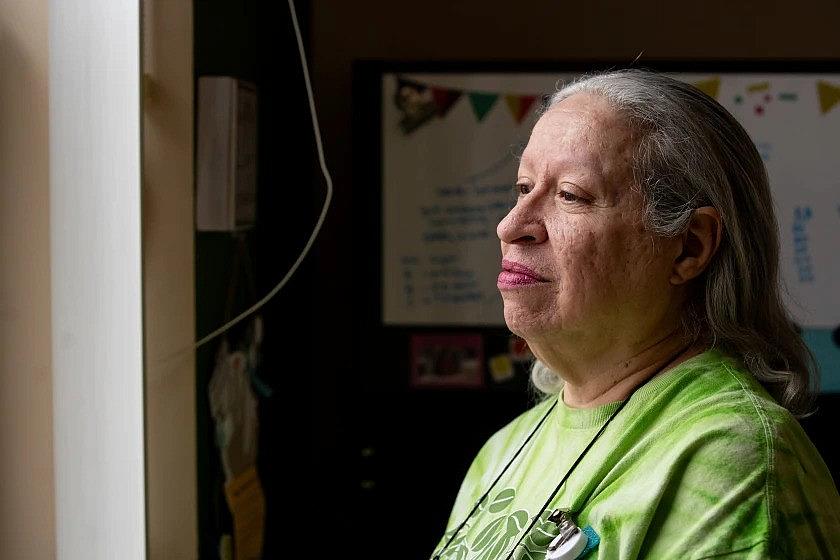
Nori Santiago, nurse health manager at Casa Central, says the social services nonprofit’s effort to remove some of the barriers to accessing WIC by providing pop-up clinics that provide enrollment resources has had a good community response.
Zubaer Khan/Sun-Times
Sarkodie says she wants to go back to work and has tried applying at nursing homes several times, but has been told her medical condition poses a risk for the employer. She says it breaks her heart that she can't give her children certain types of food or special treats from time to time.
“A lot of people don't know how your kids look when they want something that you can't give to them, like food,” Sarkodie said. “They tell you that they want this kind of food, and you don't have money to give it to them. A lot of people don't know, and I wish they knew.”

